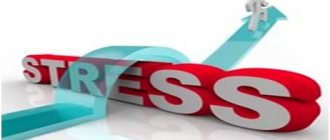Breathing exercises for relaxation
Few modern people know how to breathe correctly. But breathing is the most important process given by nature. Often, in the bustle and tension, a person is in a hurry, doing different things, but at the same time does not monitor his breathing. It becomes superficial and frequent, and gets lost. As a result, the body suffers from a lack of oxygen, and the person begins to feel weak and tired.
Breathing exercises for relaxation are of great benefit; performance and endurance increase, respectively, and resistance to stress becomes higher. Anti-stress exercises necessarily include breathing relaxation. Deep breathing helps relieve tension, relaxation, and reduce the impact of stress. The following exercises are the most popular among breathing practices.
Diaphragmatic breathing
Breathing exercise to relieve stress
This is a natural process - breathing with the stomach, that is, using the diaphragm. Its movements make it possible to better fill the lungs with air; accordingly, the body is saturated with oxygen, the functioning of the heart and blood vessels, and lymph flow improves. This practice is used to prevent bronchopulmonary diseases. It is important for smokers and overweight people to learn how to do it correctly.
It is better to practice diaphragmatic breathing twice a day, morning and evening. It is enough to devote half an hour a day for a week to exercise, without being distracted. Body position – lying or sitting. You need to relax as much as possible, place your hands on your stomach, the left one is located on the chest, and the right one is located slightly lower on the stomach. This will allow you to control the execution of the technique.
When inhaling, the chest does not move, the stomach rises. When exhaling, the stomach lowers, the release of air should be three times longer compared to inhalation. You should repeat the exercise 15 times in a minute; in total, slow breathing is practiced for 15 minutes. At first you may experience dizziness, but the body quickly adapts and it will pass. People with high blood pressure should not do the exercises.
Double exhale
Double exhalation
When a deep exhalation is followed by a pause of several seconds, a person feels the lungs opening and preparing to take in a new breath of air. This exercise can be improved and one more element can be added to the breathing exercises, additional exhalation. After breathing has been leveled, during the pause after exhalation, an effort is created to exhale even more completely. That is, an attempt is made to exhale all the air completely. Then you should restore your breathing and continue the usual counting exercise.
Breathing on a count
This practice is suitable in cases where there is an urgent need to relieve tension, but it is not possible to avoid a stressful situation. The inhalation-exhalation cycle should take 20 seconds, breathing very slowly and deeply. When inhaling, you need to concentrate on the process, count to 7, then when exhaling, count to 11. The benefits for the body of this practice are great. A person is distracted from the stressor by turning his attention to breathing, the lungs stretch, which allows tension in the intercostal muscles to be removed, and long exhalations help to relax the stomach.
Exercise "Belly laugh"
An exercise to relieve stress is similar to diaphragmatic breathing. The difference is that the hands are placed on the diaphragm. First, you should breathe in your stomach for some time, which will help you calm down. Then it is necessary to recreate the sensation as if a person is overcome by laughter, while tension and movement are formed in the stomach, which the hands will feel. Repeat the laugh for a few seconds and return to normal breathing.
Inhale and exhale through different nostrils
This is the most important exercise practiced in yoga. To perform it, you should close your right nostril and take a deep breath with the other. Then the left nostril is closed and air is released through the right. This is called alternate breathing, which has a beneficial effect on relieving tension.
Read more - Breathing exercises for stress
How to overcome stress: methods and exercises
Stress is a condition that is well known to any modern person, but not everyone knows how to overcome stress. This is where the whole problem lies.
Our life is full of stress, and no one is immune from it. We often feel anxious; the fear of losing our health, our jobs, or our loved ones constantly depresses us. Various work and everyday troubles suddenly grow like a snowball, and we perceive them as a threat to our well-being.
We are very vulnerable to stress, and the emotional strain it causes can undermine the health of any of us. Under the influence of stress, we experience headaches, rapid heartbeat, hand tremors and other unpleasant symptoms.
Psychologists warn that stress can cause depression, exhaustion of the nervous system, and cause nervous breakdowns and various organic disorders.
That is why it is very important to learn how to overcome stress, to be able to gain a positive attitude in life and self-confidence.
WHAT TO DO TO OVERCOME STRESS
1.
First of all, you need to control your emotions and not fall into complete despair.
Otherwise, we will simply lose the opportunity to really assess the degree of complexity of the problems that have befallen us. It is important to realize that everything that happens to us is temporary. All troubles will go away sooner or later, you just need to clearly determine the cause of your worries and take on the solution to the problems. If it is impossible to resolve them immediately, you need to try to identify the most significant ones and start working on them. Here you need to clearly formulate goals, consider obstacles, develop solutions and evaluate the effectiveness of your actions. It is worth considering that problems are a completely normal and natural phenomenon in our lives. You just need to maintain a positive attitude and a sense of self-confidence.
In this situation, it is very important to try to find moral support, communicate with friends and loved ones, talk with someone who understands and supports us.
If possible, it is better to seek qualified help from a psychologist and tell him about everything that worries you. It will help you abstract from the situation, stop overdramatizing it, thereby reducing the “intensity” of the problem, transferring it to a lower rank in terms of significance.
2. Relaxation
– an excellent method for overcoming stress. It can be used to relieve mental or physical stress. With the help of relaxation at the right time, it is easy to regulate muscle and nervous tension, resist fatigue and irritation.
EXERCISES FOR STRESS RELIEF AND RELAXATION
Initial position.
We lie on our backs, spread our legs to the sides, and turn our feet outward with our toes. The arms are positioned along the body, palms up. We throw our heads back, relax our bodies, close our eyes, and breathe through our noses. Exercise 1.
Let's focus on breathing, feeling that the exhaled air is warmer than the inhaled air. We breathe like this for two to three minutes.
Exercise 2.
We take a shallow breath, holding our breath for a few seconds. At the same time, we sharply tense all the muscles of the body, trying to feel the tension in them. Exhaling, let's relax. We repeat four times. Then, having relaxed, we lie quietly for a few minutes, concentrating on the feeling of the heaviness of our own body.
Exercise 3.
We strain the leg muscles, simultaneously from the hips to the feet. We fix the tension for a few seconds and relax. We do the exercise four times. After this, we completely relax the whole body, concentrating on the legs.
Next, we continue to perform exercises using the same technique to relax the gluteal muscles, chest, abs, face, and arms.
To complete the set of exercises, take a deep breath, hold your breath and tense the muscles of the whole body for a few seconds. Then, slowly exhale and relax, lie on your back without thinking about anything, not paying attention to extraneous sounds, for ten to fifteen minutes.
3.
In almost all eastern health practices,
breathing exercises play a special role
. They are also used to overcome stress and restore mental balance.
Let's bring our right hand to our nose. Take a shallow breath and close the right nostril with the finger of your right hand. Slowly exhale through the left nostril, then inhale and close it with your fingers. We exhale through the right nostril, inhale and close it to exhale through the left nostril. We breathe alternately through the right and left nostrils for five to ten minutes.
This exercise relieves restless thoughts and feelings of anxiety.
Opening your mouth wide, stick your tongue out as far as possible, and exhale forcefully, while making the sound: “Haaa.” It should come out from the depths of the larynx. Together with this energetic sound, we will get rid of negative thoughts, push out of ourselves resentment, sadness, anger and everything that prevents us from living.
This cleansing breath relieves internal tension and restores mental balance.
Lying on your back, place your palms on your stomach. We inhale deeply and slowly, feeling how the stomach expands as we inhale. Then, we exhale long, observing how the stomach gradually contracts. The exercise is performed at least five times.
This exercise is most effective for overcoming stress; it relieves anxiety, negative emotions and aggression.
4.
It is advisable to use musical accompaniment for relaxation and breathing exercises
.
Music is often used to relieve stress, since listening to musical compositions increases the depth of breathing and releases the hormone of joy - serotonin. Classical music is especially powerful in this regard. The works of Tchaikovsky, Beethoven, Vivaldi, and Mozart have long been used in sanatoriums to treat depression, neuroses and sleep disorders. Music also has a relaxing and pain-relieving effect.
5.
Strong emotions against oppressive tension.
One of the most effective methods of overcoming stress is releasing tension through the release of adrenaline. In addition, adrenaline extinguishes the negative effects of another stress hormone - cortisol. Therefore, an excellent way to quickly overcome stress can be to engage in some extreme sport, skydiving, active play, or a walk through an amusement park for adults. Thus, we get the opportunity to recharge ourselves with fresh, vibrant emotions and look at the world in a new way.
AROMATHERAPY
6.
Aromatherapy is one of the oldest methods of stress relief, which was used by the Egyptian queen Cleopatra even before our era. Essential oils of bergamot, rosemary, lemon balm, geranium, nutmeg, jasmine, lavender, sandalwood, pine, fir, mandarin, grapefruit are excellent stress relievers. They are used as an air freshener, perfume or added to the bath.
7.
Numerous studies have shown that even with moderate physical activity, the level of endorphins in the blood increases - hormones that can elevate mood and suppress pain. Swimming, dancing, walking or any other type of physical activity will raise your vitality, give you self-confidence, and help you overcome any stress.
8.
Sometimes stress becomes protracted, and a person cannot always cope with it, even with volitional efforts. In such cases, you have to resort to medication.
Medicines:
"Grandaxin" is a drug that has a mild sedative effect. It is non-addictive, increases a person’s resistance to stress-causing factors, normalizes sleep, relieves restless thoughts, feelings of anxiety and disorders of the autonomic nervous system, and also allows you to adequately assess the situation and control it. It has no harmful side effects, so it can significantly improve the quality of life of a person taking Grandaxin.
“Glycine” is a drug containing an amino acid necessary for all cells of the body to naturally inhibit and balance its metabolism at the molecular level. The drug relieves emotional stress, improves mood, and normalizes sleep. Unlike many other similar medications, Glycine has a positive effect on attention and memory.
Afobazole is a drug that does not cause drowsiness and quickly helps to cope with stress.
Don’t forget also about motherwort, valerian, corvalol/valoserdina/valocordin.
Exercises for flexibility and muscle relaxation
Flexibility Exercises
Exercises to relieve tension and stress include flexibility and relaxation exercises. It is recommended to perform the complex in a certain order, starting from the joints of the upper limbs, moving down. In between approaches, relaxation is practiced. In order to learn how to manage stress , it is important to control your body. To develop flexibility, 2-3 sessions per week are enough, and within a few months the results will be noticeable.
Shoulder stretch
The attractiveness of stretching exercises is that you can perform them at home and do not require complex equipment. To stretch the shoulder girdle, stand up straight and place your palms on opposite shoulders. Breathing is even, while inhaling, the elbows of the arms stretch upward. Do 15 repetitions in total.
Exercise “Reach for the Stars”
This psychological technique helps to achieve mental balance and relieve muscle tension. To perform it, you need to imagine a night sky with bright stars. Each of them is the personification of a certain desire. All that remains is to wish for it, take out the star and remove its basket. You need to reach high for it, stand on tiptoes, and with both hands pick a star from the sky. This is done while inhaling, relaxation occurs as you exhale, and the star is placed in a beautiful basket.
"Leg circumference"
The leg girth exercise is performed while sitting on a chair. Bend your knees so that your feet are on the edge of the chair. Bend your head between your knees, wrap your arms tightly around your legs and press them towards you. The position is maintained for 15 seconds, then suddenly release the grip. Performing this practice in the morning after waking up gives a very good effect; it is enough to do 12-14 repetitions to get a boost of energy for the whole day.
Having mastered simple exercises, you can easily and effectively learn how to get out of difficult situations.
You can watch the implementation of a simple Relax complex in this video:
Exercise “Relieving tension at 12 points”
Purpose: This exercise helps relieve tension in all major points.
It is useful to do this exercise several times a day. Begin to rotate your eyes smoothly: twice in one direction, twice in the other. Fix your attention on a distant object, and then switch it to an object located nearby. Frown, tensing the muscles around the eyes, and then relax. After this, relax your face and yawn well several times.
Relax your neck by first shaking your head and then rolling it from side to side. Raise your shoulders to ear level and lower them slowly. Relax your wrists and move them. Clench and unclench your fists, relaxing your hands.
Now turn your attention to your torso. Take 3 deep breaths. Then gently bend your spine back and forth and from side to side. Tighten and relax your buttocks, then your calves. Roll your feet to relax your ankles. Curl your toes so that your feet curve upward, repeat 3 times.
If it is difficult to move your whole body, you can try moderately tense and relax each part of the body separately.
Yoga
Yoga is a unique system that places special emphasis on breathing. It is the correct implementation of breathing techniques that increases their benefits. Any exercise to relieve stress begins with clearing the lungs and exhaling. You need to make sure that your breathing is continuous. These practices are aimed at making it easy for a person to apply breathing exercises in everyday life and relax when necessary.
Yoga classes act in several directions at once and heal the entire body. More information about the benefits of performing practices can be found in the table at the end of the paragraph.
"Child's Pose" or "Balasana"
Starting position: sit on the mat on your heels, legs next to each other, bend over and place your forehead on the floor surface. Shoulders lean forward, hands lie freely on the floor, palms up. In this position, five breathing cycles should be repeated.
This asana allows you to relax, calm down, and release tension.
Vriksashana or Tree Pose
The Vriksashan technique should be performed between the morning hours and noon. It allows you to get rid of fears and low self-esteem, increase self-confidence, better concentrate on tasks, become more collected and patient.
To perform tree pose, stand up straight and relax. Slowly raise your right leg, move it to the side and place your foot on the inner surface of your thighs. When balance is achieved, the arms rise up and stretch as high as possible. To begin with, you should hold out for 10 seconds, gradually increasing the time to 30 seconds. A similar exercise is performed for the left leg.
Uttanasana or Indian Forward Bend
Uttanasana is a great way to relieve tension from the spine, stretch the muscles of the legs and arms, which is so lacking in a modern person leading an inactive lifestyle. It is great for reducing tension in the shoulders and neck, which often leads to headaches.
Stand straight, feet together. On a deep inhalation, the arms rise up, on the exhale, the stomach is drawn in and a deep bend is performed. The palms are placed near the feet, the hips are pulled up, the neck and head are relaxed. In this position you need to take 2-3 inhalations and exhalations. Return to IP.
Ardha Chandrasana or Half Moon Pose
This is a central asana that perfectly develops balance. It affects a large number of hard-to-reach muscles, which allows you not only to relieve tension, but to form a beautiful, healthy body. It is performed in a standing position, breathing evenly and deeply.
The body weight is transferred to the left leg, the body leans forward, and the right leg rises up. The goal is for the right leg and body to form a straight line parallel to the floor. Then this line should be pulled out in different directions, while the pelvis remains motionless.
The right palm falls to the floor, the body turns to the left, and the left hand rises up. The vertical line of the arms should be straight, the gaze automatically rises up to the fingertips of the left hand. Hold in this position for about a minute, then repeat the exercise in the other direction.
"Viparita Karani"
This asana is performed in a lying position on your back, with your legs raised on the wall, which will serve as a support. You can first lift only your legs, in the future it will be easier, and the pelvic area is lifted to the desired limit. Attention, after this exercise you must perform the asana Shavasana - corpse pose.
"Garudasana" or "Eagle Pose"
When standing straight, the knees bend slightly and the right leg wraps around the left to maintain balance. Hands rise forward, intertwine, palms touching. In this position, you need to squat as far as possible. The effort is applied until a pleasant tension is felt in the body. The exercise is repeated with the other leg. After each exit from the pose, rest is required.
Matsiasana or Fish Pose
In the lotus position, while inhaling, the body leans back, supported by the arms, until the top of the head touches the floor. Your knees may rise slightly, but ideally they should be flat on the floor. In the final position, exhale.
Matsiasana fish pose
Hands grab the feet or big toes and bend the back so that the chest opens. The time spent in the asana is from 30 seconds to 3 minutes, breathing is free and calm. Exit after inhaling and exhaling, rest your elbows on the floor and slowly raise your head. Helping with your hands, return to the lotus position.
Benefits of Yoga Exercises
| Direction of influence | What is the positive impact? |
| The cardiovascular system | Active breathing, which is practiced by yogis, activates blood circulation and trains the heart. This increases endurance. |
| Reproductive system | A decrease in potency and sexual activity is affected by low mobility of the small pelvis, caused primarily by sedentary work. Performing asanas improves the condition of internal organs and allows you to learn how to competently control your body, enjoying every movement. |
| Joint mobility | A person's life depends on the health of his body. The more flexible the spine and joints, the fuller and longer a person lives. Stretching and flexibility exercises can help restore flexibility to your joints and spine, regardless of age. In addition, muscles are stretched, tension is reduced, and heaviness goes away. |
| Endurance development | Physical strength and endurance develop as practice progresses and the complexity of the exercises increases. Individual asanas are aimed at strengthening muscles, improving coordination of movements, and increasing endurance of the whole body. |
| Stress relief | The benefit of yoga is that practitioners teach how to quickly and effectively relieve tension, which is very important in conditions of constant stress. This protects the body from premature aging and the development of nervous disorders. In addition, by practicing meditation with breathing exercises, a person learns to better understand the needs of his body, distract himself from external stimuli, and maintain a balance between the body, emotions and mind. People who regularly practice yoga are less susceptible to stress. |
What should breathing be like according to yoga?
The goal of yoga is to teach a person to control his own body as much as possible, and above all, breathing. The ancient teaching treats this function very carefully, devoting a lot of time to it. Students must learn to control the work of their lungs and feel how the air passes inside: unhindered, deep, correctly.
According to yoga, breathing exercises to relieve stress help to establish a strong connection with the inner world, activate powerful energy flows and bring you into a state of complete calm or, conversely, slightly excite you - depending on what the person wants to achieve. This is great for quickly relieving panic attacks and stress caused by overexcitement.
The correct method of breathing is only with the stomach. It is in this case that the entire volume of the lungs is used, and oxygen is supplied in maximum quantities. Yogis advise learning from children. If you watch how a baby breathes, it will become obvious: his stomach literally moves up and down. Moreover, air always enters through the nose.
There are three types of breathing in total.
| Breathing type | Organs involved | Advantages and disadvantages |
| Clavicular or superior | Only the upper part of the lungs, actively working the shoulders and chest | A small volume of the lungs is filled, while the body wastes a lot of energy. |
| Intercostal, or middle | Middle part of the lungs. The intercostal muscles are actively working. | More oxygen is supplied, but still not enough. |
| Diaphragmatic, or lower | Diaphragm. The stomach “breathes”, while both the upper and lower regions of the lungs are filled. By arching downward, the diaphragm simultaneously produces a natural massage of the internal organs of the peritoneum. | The most correct type. Delivers a large volume of air. |
Relaxation, kneeling, detachment from the outside world are important conditions for exercise. Stress breathing will help you only if you manage to achieve maximum relaxation and forget about control.
In the native language - “kapalabhati”, or “cleansing of the skull”. Classic sitting position (Turkish, on your knees or in another comfortable position), the back is straight. The eyes are closed, the facial muscles are relaxed. We close the index and thumb of both hands into a ring, and straighten the rest and point them upward, opening the palm.
We breathe through the nose, concentrating on the fullness and depth of inhalation. When completing the exhalation, you need to sharply contract the abdominal muscles, blowing out the remaining air (a similar movement occurs when blowing your nose). This is followed by a long inhalation, during which the abdominal muscles relax.
You should start with three sets of 10 repetitions, gradually increasing to 108 in one approach. Rest for about half a minute between cycles. Contraindications – formation of hernias in the abdominal space, hypertension, problems of the cardiovascular system and lungs.
Complete yoga
It is considered the deepest and uses the entire volume of the lungs. By performing this exercise daily, you will receive the necessary charge of life-giving energy and feel a significant improvement in your general condition.
The initial position is the same as in the one described earlier, the only thing is that it is recommended to sit in a Turkish style, especially for those who have just begun to master the technique.
The yogi uses all three types of breathing simultaneously - the main secret of the exercise. To do this, first slowly exhale all the air, and then inhale, starting with the lower type of breathing. We move the stomach forward, filling the lower part of the lungs with oxygen. We expand the chest by performing the second type - air enters the middle part of our natural bellows.
We suggest that you familiarize yourself with Therapeutic gymnastics for kidney prolapse
A complete exhalation is carried out in the same order: the abdomen (diaphragm), middle ribs and chest, collarbones and neck. When breathing in this way, maintain a feeling of inner comfort and do not overexert yourself, otherwise you will not achieve the expected effect. Beginner yogis are recommended to carry out 3 cycles of full breathing daily, gradually reaching 10-14 times.
Contraindications: any pulmonary pathological process, cardiovascular disease or hernia.
Gymnastics Qigong
Anti-stress exercises are also contained in Qigong gymnastics. This eastern practice brings calm and strength, allowing you to support the body in the fight against the effects of stress . A kind of autogenic training helps to increase the tone of the nervous system and get rid of irritation.
Gymnastics Qigong
The exercise Hug with a Tiger is widely used.
- To perform it in a standing position, spread your arms to the sides at shoulder level, connect your palms and fingers, and pull them towards the navel area. At the same time, the words are spoken: I accept everything, both good and bad.
- Then, with a sharp movement, the palms unfold, as if rejecting everything accumulated, with the words: I accepted everything that happened to me. I don't let it affect me anymore. I reject stress.
This powerful exercise of the Qigong system will allow you to learn how to control stress, how a powerful lever will help you emerge victorious in many difficult situations. Moreover, gymnastics is aimed at improving the quality of life and promoting health.
Other exercises
There are many more practices and exercises that are aimed at reducing the impact of stress on a person. It is important to remember that there is protection, but you need to rely on yourself. Anyone can master the exercises.
An exercise called Problem will help you cope with a situation where tension is caused by problems that seem to be hanging in the air, when it is difficult to find a solution. The main thing is to change your attitude towards her.
To do this, just dedicate 10-15 minutes to yourself, get comfortable and close your eyes. You should begin to imagine your problem by concentrating on it, gradually including neighbors, friends, others, and the house where the person lives in the spectrum of attention. In this case, you need to try to consider the cause of the tension as if from the outside, in the mirror.
Then the mirror image includes the city in which the person lives, the country and all the people inhabiting it. The picture is expanded in an ascending manner, collecting the image until the picture covers the entire earth, with continents and oceans, and millions of people living on it.
The main task is to ultimately feel the entire Universe, the entire solar system, which reeks of indifference to humanity living on earth. When the maximum point has been reached, it is worth returning to your problem and formulating it in a few words.
The solution is achieved due to the fact that against the background of human life in this world, the relevance of one task is lost. This will help change your attitude towards the situation and relieve tension. Which in turn will allow us to find a more sober and constructive solution.
Another exercise called Drawing is also very effective. It will take 15-20 minutes to complete, during which time you will be able to eliminate the unpleasant condition caused by stress, conflict, disorder, and calm down.
Use colored pencils or felt-tip pens to draw your mood on a piece of paper. You need to allow yourself to relax and subconsciously express everything that is bothering you at the moment. All experiences are transferred to the sheet; you don’t really need to control yourself, just allowing your hand to draw lines, squiggles, spots.
Drawing stress
After completing the drawing, on the reverse side you should describe in words your condition, grievances that reflect your mood. After which you need to tear the leaf, energetically and with pleasure, as if removing your adversities along with it. These simple steps are very effective in getting rid of bad mood and eliminating panic attacks during pregnancy .
How to choose an individual set of exercises
There are many complexes and exercises to eliminate the symptoms of stress; it is important to choose something suitable for a particular person. Everything is individual, and the same exercises will have a great impact on one person, but will help another little. How do you know which one is right?
To do this, you just need to try a few exercises that are most attractive to you. The criteria by which the selection is made are as follows:
- actions should bring pleasure, if it is pleasant to perform the technique, it will definitely help;
- satisfaction should come from the very process of doing the practice; the calculation is not only based on the result;
- after performing the method, relief comes, emotional stress decreases, and your mood improves;
- the practice should be easy to do anywhere and at any time (you should choose at least a couple of exercises that will allow you to calm down in moments of high stress without the need for privacy or the use of any equipment).
The best stress exercises
In the fight against stress, a person is not alone. Everyone can and should be able to eliminate its negative consequences, which threaten not only health, but also life. It is important to find ways that are suitable for yourself that will help you out in difficult times, restoring a positive attitude and self-confidence.
Source: stressamnet.ru
Exercise to relieve stress. physical education article on the topic
"Exercise to relieve stress"
Natalya Yuryevna Pyrshenkova – physical education teacher, Secondary School No. 60
Vyborg district of St. Petersburg
Introduction.
Everyone is familiar with the feeling of stress and depression. But only a few know that one of the effective ways to combat stress is regular physical activity, in other words, fitness classes. Psychological relaxation occurs both during and after training. Regular physical exercise (running, gym, swimming, aerobics...) has a positive effect on the state of the nervous system. Even on the days between workouts, you'll feel great. In addition, it has been proven that fitness classes increase self-esteem, which is the most important point in the fight against stress.
What is stress?
Translated from English, stress means pressure, pressure, tension. Psychologists also use the term distress (grief, unhappiness, malaise, exhaustion, need), which means, in simple terms, severe stress of an unpleasant nature. Without going into scientific and terminological subtleties, we will understand stress as strong emotional experiences, internal tension caused by some events in your life.
Fitness and stress.
It is important to note that the level of exercise needed to relieve stress varies from person to person. For some, a short evening jog through the forest is enough, for others, it is necessary to “lift iron” in the gym, and for others, they get relaxation after hitting a punching bag with their hands and feet (by the way, one of the most effective methods!!!). In any case, it has long been proven that regular physical activity prevents and helps relieve stress.
Some research suggests that regular, moderate-intensity exercise may provide a type of immunity to stress. It has been proven that physically active people are more resistant to nervous breakdowns than people who lead a sedentary lifestyle.
Thus, constant physical exercise (fitness) trains not only the human body, but also improves mood, instills confidence, and strengthens the nervous system.
Causes
Fatigue and tension can be caused by various factors: emotional distress, family troubles, poor health, problems arising at work - all this, combined with an unhealthy environment, can cause a state of stress. Which causes serious consequences: insomnia, ulcers, provokes heart disease. This occurs due to the release of the hormone adrenaline, which is a decay hormone, the heart rate increases, blood pressure rises and the amount of sugar in the blood increases, sweating increases, and breathing quickens. These functional changes in the body become tiresome for us, and we do not know what is happening with them. The feeling of anxiety and fear increases, and the state of stress perpetuates.
Stressful situations arise especially often among residents of large cities.
You can overcome these problems if you wish. Wellness classes at a sports club, meditation, massage, hardening, baths with herbal extracts, and Scottish showers are great help in the fight against stress.
As a result of physical exercise, blood circulation improves, which improves the functioning of the heart; oxygen, which actively enters the lungs, improves the functioning of the respiratory system. As a result of the metabolic process, the hormone endorphin is released - the hormone of happiness. Unlike adrenaline, endorphin lifts our mood, makes us hum songs under our breath and rejoice. And, of course, everyone knows that recreational activities are beneficial, no matter what you want to do or what age you are.
Exercise improves blood circulation, venous and lymphatic drainage, and also helps you lose fat.
Any exercise in which the main load falls on the legs, such as walking, cycling, dancing, etc., causes the muscles of the calves and thighs to contract. The contraction of these muscles has an active effect on flaccid veins and lymphatic vessels and promotes increased pumping of venous blood and lymph to the heart. Regular flexion, extension and extension of the feet, which is typical for dancing, and especially for ballroom dancing, improves the flow of lymph to the heart, stimulating the plantar reflex.
Special abdominal exercises increase tone and strengthen the abdominal muscles. Strengthening the abdominal press has a beneficial effect on posture: the pelvis returns to its place and the pinched narrow inguinal canal opens. As a result, the pressure on the femoral vein is reduced and the flow of venous blood and lymph improves.
Ways to deal with stress.
Chronic stress also affects the immune system, making a person more susceptible to infections, cancer and autoimmune diseases. An example of autoimmune diseases is rheumatoid arthritis and many types of anemia.
It's not always possible to prevent events that lead to stress, but we can change how we react to them. Each person is individual and, depending on many factors, reacts differently to a stressful situation.
There are several stress relief strategies depending on the situation. First of all, it is necessary to analyze the causes of stress and then try to reduce stressful situations to a minimum.
You can relieve stress with the simplest means - keeping a diary, watching comedies more often, playing with pets.
It is also recommended to balance your desires and capabilities, not to exaggerate difficulties, learn to use your time effectively. Communication with loved ones also helps relieve stress. In any, even the most difficult situation, you can always find the right solution. Encourage yourself and don't hesitate to ask friends and family for help.
Daily exercise relieves stress by burning excess stress hormones and increasing the level of mood-lifting substances called endorphins in the blood.
Exercise is a natural remedy to combat depression and relieve stress in our daily lives. Regular exercise causes our brain to release natural endorphins into the blood, which improve our mood and protect us from the harmful effects of stress. Our sense of well-being increases and we feel at peace with ourselves. This state of relaxation allows the body to open its internal “healing” channels, thereby giving us the opportunity to more fully take advantage of all the benefits of the healing process.
Physical exercises to relieve stress while working with a computer
1. I. p. - stand with legs apart. 1 - hands back. 2 - 3 - arms to the sides and up, stand on your toes. 4 - relaxing the shoulder girdle, arms down with a slight bend forward. Repeat 4 - 6 times. The pace is slow.
2. I. p. - stand with legs apart, right hand forward, left hand on the waist. 1 - 3 - circle with the right hand down in the lateral plane with the body turning to the right. 4 - finishing the circle, right hand on the belt, left forward. The same in the other direction. Repeat 4-6 times. The pace is average.
3. I. p. 1 - bend your right leg forward and, clasping your shin with your hands, pull your leg towards your stomach. 2 - put your foot down, arms up - out. 3 - 4 - the same with the other leg. Repeat 6-8 times. The pace is average.
The Importance of Mindful Breathing
Controlling your breathing is important to achieve harmony. When under stress or nervous tension, the anxiety hormone adrenaline is released into the blood. It causes muscles to tense, stimulates a rapid heartbeat and strong shallow breathing. At the same time, the ability to draw conclusions and make decisions is practically turned off: the brain begins to work in a mode that would allow it to control the movements of the body when fleeing or fighting.
While performing breathing exercises, the body is saturated with oxygen, and due to concentration on the exercises, the functioning of the endocrine system changes. Pleasure hormones (endorphins) begin to enter the blood, which promote muscle relaxation and help quickly restore the ability to build complex logical structures.
Breathing exercises to relieve stress and anxiety
The state of the nervous system is closely related to the functioning of internal organs. With prolonged stress or short-term strong feelings, the result can be diseases of the heart and blood vessels, gastrointestinal tract, etc. Simple breathing techniques can help you learn to cope with anxiety and irritation - several exhalations and inhalations in the right rhythm.
Gymnastics in the rhythm of the heart
Feel your pulse before performing. For a few minutes, observe how many heartbeats there are for 1 exhalation and a calm inhalation.
Begin to gradually lengthen your exhalations. Do the first few breathing movements, continuing to exhale 1 pulse beat more than was counted before starting the exercise. You need to pay attention to how your heart rate slows down in accordance with deeper breathing.
After this, you need to increase the exhalation time by another 1 heart beat. After a few breathing cycles, try to lengthen the exhalation by another 1 beat. When performing the exercise, you need to constantly monitor the slowdown of your heart rate.
Such anti-stress gymnastics leads to the synchronization of different processes and helps to calm down, relax and return to normal.
Breathing technique for the abdomen
The diaphragmatic cycle of inhalation and exhalation helps to relax the muscles of the abdominal wall, relieves its tension and allows you to relax. To perform this technique while sitting or lying down, place your hand on your stomach to control its movement. Then you need to take a deep breath, concentrate on the fact that instead of a reflex movement of the chest, you need to inhale, inflating your stomach. At the same time, the hand rises. Exhalation occurs when the muscles of the abdominal wall relax.
You need to breathe at an arbitrary pace, filling your stomach as much as possible and exhaling in a relaxed state, for 1-2 minutes. Then you can connect an even count, trying to make the exhalation take longer than the inhalation. When the breathing technique is mastered, breathe in the chosen rhythm for 3-5 minutes.
When performing, focus on the sensations of movement of the abdominal wall, diaphragm, and air. In the 3-5 minutes allotted for the exercise, you can relax and calm down.
Breathing technique on a count
Breathing on a count is performed both against the background of diaphragm movements, and separately from them. To master the practice, focus on your breathing: counting evenly at an arbitrary pace, you need to determine at what count a full inhalation and the same exhalation occur. Over the next few minutes, begin to lengthen your exhalations.
For 3-5 minutes you need to try to breathe, observing the new duration of exhalations. While doing gymnastics, focus on how your abdominal muscles relax.
As you master the exercise, you can begin to lengthen your inhalation. Gradually come to a comfortable breathing cycle, observing the ratio of inhalations and exhalations: the air leaves the lungs longer and without tension.
Stress and children
It's not just adults who are susceptible to stress. It threatens our kids no less. Their psyche is still quite fragile and more susceptible to external influences. Often we, without realizing it, harm our child. A lack of attention or a carelessly thrown word can deeply hurt.
Both psychological exercises have been developed for adults, and for our children there is a set of psychosomatic exercises aimed at combating psychological problems. The exercises are designed for a group of children, but there are also exercises that a child is quite capable of doing on his own. The main requirement for such work is the age of the child - from 2-3 years and older. The lesson itself should be held exclusively in a playful form. This is a very important point, because if the child is not carried away by the game, then psychological exercises will not bring results, and, perhaps, will even put the child into a state of stress.
So, how can psycho-gymnastics help our children:
- will teach you to adapt to a team, make acquaintances and make friends,
- will help you understand yourself, your feelings and the feelings of others,
- teaches you to demonstrate and understand emotions,
- will relieve shyness, disgust, fears and other troubles,
- develops imagination and creative thinking,
- will teach you to control your movements.
Before you start classes, try to prepare your child and involve him in the game. This will help the baby relax and participate in the process with great interest. The objects of attention in such a warm-up can be any surrounding objects. Blindfold your child, ask him to take a deep breath, swap the elements of the environment and ask him to guess what has changed. Or put some object in your hands, then change it and ask what has changed in the sensations. The warm-up is completed, let's move on to the main set of psycho-gymnastic exercises:
"Teddy bunny." This technique relieves facial muscle tension. Any favorite toy will do. We take it, sit down opposite our baby and say: “Let's play with the bunny. The bunny kisses the nose, the bunny kisses the cheeks, the bunny kisses the forehead...,.” Gently stroke your baby during this time, either by holding a toy in front of him or by stroking him with the toy itself.
Tell your child that the bunny loves him and you need to make friends with the bunny and smile at him. The goal is achieved, the baby relaxes and smiles.
"Look who's talking." We teach the child to empathize, develop the ability to identify himself with the world around him. The child chooses an object and tells what he would like to be and what he did. The more objects the baby describes, the better. The main thing is to make sure that the actions and description are positive.
"The flower is waking up." Relieving emotional and muscle tension. The child is in a state of calm. The adult says: “The sun has risen, the flower wakes up (the baby straightens up and pulls the tips of his fingers as high as possible), the breeze blew slightly, the flower clings to the grass (the child presses himself to the floor), the breeze has died down completely (the child straightens up), the sun has gone to bed, and he fell asleep flower (child relaxes).
“Hug a friend.” We satisfy the need for emotional intimacy. We bring some of our favorite toys. The child chooses one of them, hugs and says something affectionate, then takes the next toy.
The “Hug a Friend” technique helps fill the lack of emotional intimacy
"Moods". We learn to accept and understand our feelings and fears. Ask your child to continue the phrase: “I love it when...”, “If it’s dark for me...”, “When my mother is not around me...”, “I get angry if...”, “If I’m offended...”, “Once I was...”.
"Samaritan". We develop empathy and teach our baby to help. We tie the arm of one of our relatives - it is supposedly broken. The child is offered help to eat, drink water, draw a picture, get dressed, etc.
Basic rules of breathing exercises for stress relief
When mastering deep breathing to calm your nerves, you need to find an opportunity to retire in a calm environment. In addition, it is important to follow the following rules:
- Don’t try to breathe by straining all your muscles. If you can’t relax at first, you need to breathe as best you can.
- You only need to focus on breathing movements and body sensations during gymnastics.
- To better master diaphragmatic breaths, place a small weight on your stomach. At first, a hand freely controlling the movements of the press is enough.
When performing gymnastics for nervous tension, you should not try to perform all the breathing exercises to relieve stress automatically, rushing to move on to other things. Only calm and focused, slow inhalations and exhalations can have a relaxing effect on the body.
Source: eutress.ru
Exercise “Breathing on a count of 7 – 11”
Goal: relieve physical tension without leaving a stressful situation.
Breathe very slowly and deeply, so that the entire breathing cycle takes about 20 seconds. Count to 7 as you inhale and to 11 as you exhale. It may not be easy at first, but don't despair. This stretching of the breath requires full concentration. Many people find it fascinating. Taking a deep breath softens the tension that will inevitably appear in the intercostal muscles. Exhalation extended over time relaxes the stomach.
If you feel a little dizzy the first time you try this method, next time shorten the period of the full cycle and breathe less deeply.
The Importance of Mindful Breathing
Various breathing techniques and gymnastics came to us from the east, where they say “who controls breathing controls life,” because in yoga it is believed that life is measured out to us for a certain number of inhalations and exhalations, which means that the more fully and slowly we breathe, the longer our life expectancy.
Many pranayama (breathing exercises) require extensive training and guidance from a teacher. However, there are universal and simple exercises.
The basis of breathing exercises is deep breathing or, as it is also called, abdominal breathing. It not only calms and harmonizes, but also saturates the internal organs with oxygen much more strongly than the superficial or thoracic. Abdominal breathing, due to the movement of the abdominal wall and the removal of clamps, has a beneficial effect on the functioning of the gastrointestinal tract and cleanses the lungs.
Basic rules of breathing exercises
- Comfortable environment. If you are just starting to learn breathing exercises, it is important to find 3-5 minutes in a calm and comfortable environment to help your body and psyche relax. In the future, with the help of breathing, you will be able to relax yourself in any, even the most tense, atmosphere.
- During times of stress, the psyche is tense and there is a desire to do everything quickly. Solve all problems in the jerk and approach relaxation in the same way. A person under stress begins to breathe too deeply, without listening to his feelings. This kind of forced deep breathing can lead to hyperventilation, excess oxygen, and even fainting. Breathe calmly and exactly as deeply as your body allows at the moment. In the future, it will become easier and easier for you to breathe deeper and at the right rhythm.
- Mindfulness while breathing as a relaxation technique. Take a break from external stimuli and direct all your attention to your body. Walk your attention throughout your body - from the top of your head to the tips of your toes. You will begin to notice spontaneous muscle twitching, which releases tension. You will also notice clamps and blocks that cannot just relax - direct your attention there and consciously relax.
- To train abdominal breathing, practice light gymnastics whenever possible. Lying on your back, place a small book or small pillow on your stomach. Breathe consciously into your belly as you lift the weight. Gradually make the load heavier by adding books. In this simple way you can train the muscles of the diaphragm and deepen abdominal breathing.










